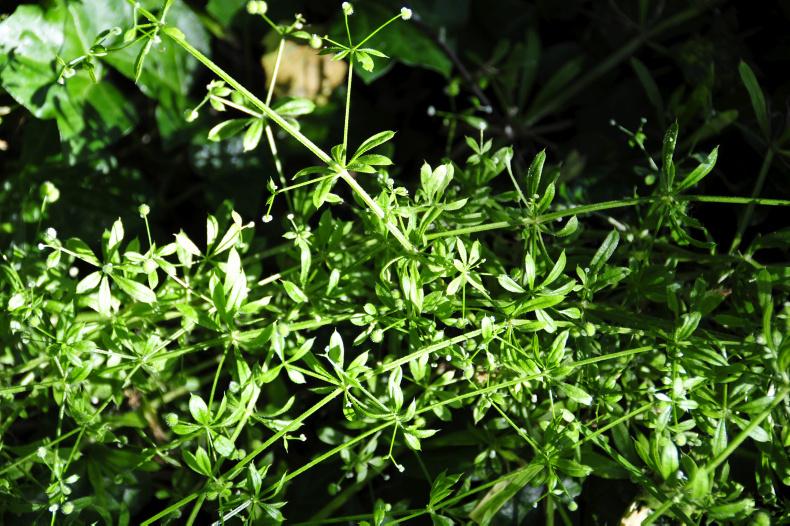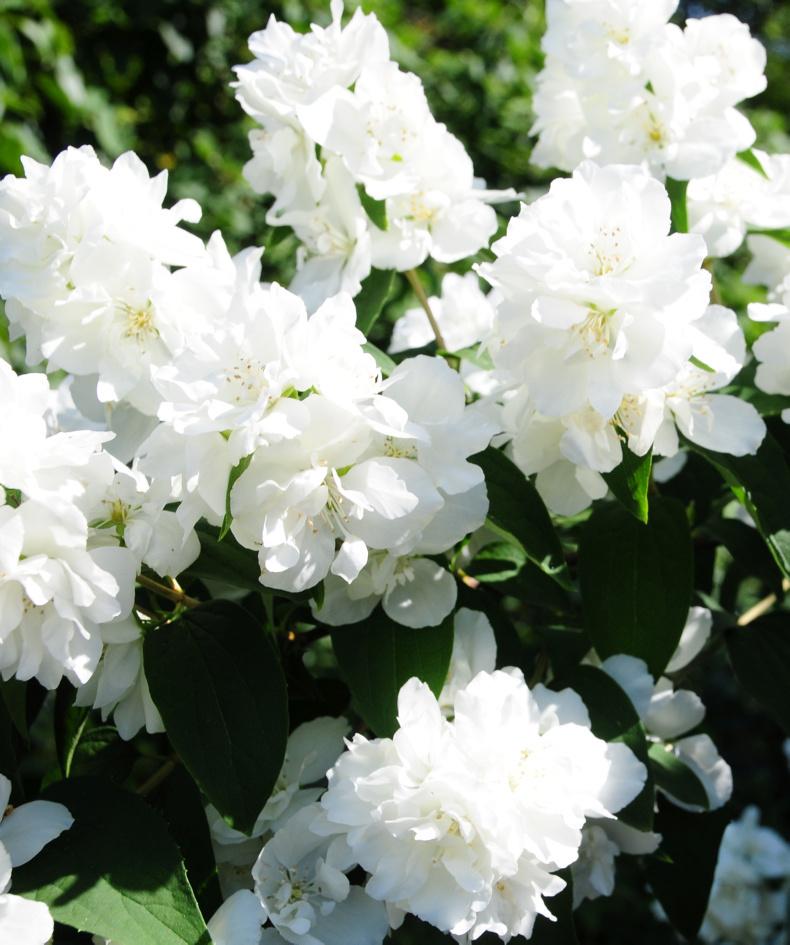Mock orange blossom, or just mock orange as it is often known, is not a very flattering name – as the word mock is a bit derogatory. It is often used to describe plants that share a resemblance with or imitate another plant – which is not much better. This linking with orange blossom is an attempt to exploit the renowned reputation of the true orange blossom for its sweet scent.
The philadelphus has a delightful, sweet scent, with a fair degree of similarity with the orange blossom, but since most people in this country have never smelled the perfume of orange blossom, we have to take it on good authority.
This makes the mock orange name a bit academic, but it is still used. Incidentally, philadelphus means lover of woods, the wild philadelphus appearing in clearings in light woodland and scrubby areas.
Often making a thicket of stems, it is well capable of growing to 4m tall and wide, making it too big for small, modern gardens and it is not the prettiest out of flower. But large gardens and rural gardens need large plants to fill space in borders. But even where space is more limited, a big philadelphus can be pruned to appear like a small tree.
Philadelphus produces masses of white blossoms. When fully grown, and growing in good soil and sunshine, the whole bush can be covered with flowers in a really dramatic show. This is a summer sight, with clouds of sweet perfume being wafted away on warm breezes.
The air of a garden filled with the scent of roses and philadelphus on a warm summer’s day is unforgettable. When the flowers are at their peak, the bush can take on a greyish-white look, a strange mixture of green, grey shadow and white or creamy flowers.
Some of the older kinds, such as Philadelphus coronarius, should be pruned annually after flowering, taking out some old shoots to reduce size. If this is done annually, the bush does not grow to much more than about 2m.
One of the most widely available is Beauclerk, with large, white, single flowers, flushed in the centre with pink, reaching 3m. Virginal is even more vigorous. This one has double, very fragrant, white flowers. Belle Etoile has an attractive arching habit which makes it about twice as tall as its 2m heigh. It has single, cupped, white flowers with a pale purple mark in the centre and it is very fragrant. The common mock orange, Philadelphus coronarius, is a big grower with small, creamy-white flowers and very good scent. There is a golden-leaved form of this which does well in light shade.
Of the smaller kinds, which are suitable for a border of any size, Sybille is about chest-high and has an arching habit of growth, broader than tall, with large, white flowers. Mont Blanc is upright but small, about 1m, with masses of flowers. Manteau d’Hermine is very broad but low, with double flowers. Avalanche arches dramatically with masses of small flowers, looks a bit like arching escallonia.
Philadelphus is easy to grow in any ordinary soil. If the soil is too rich it tends to grow taller and more leafy with fewer flowers. It flowers best in full sunshine, but tolerates shade quite well. For this reason it has often been placed towards the back of a shrub border. The smaller varieties must be given full sunshine. CL
Annoying cleavers
Cleavers is a common weed, also widely called Sticky Nelly because it sticks to clothes by means of tiny hooks on the edges of the leaves and stems. The system of tiny hooks acts in two significant ways. One is that the hooks help the stems of the plant to climb, scrambling up other plants, garden scrubs or flowers, and it spreads vigorously over piles of old pruning. It can climb to 2m, though usually less.
Before it gains full size it flowers and makes pairs of round seeds, each about the size of a match head, and these are equipped with tiny hooks to assist the seeds becoming distributed more widely. It is common to find cleavers’ seeds stuck to clothes and attached to pets, falling away easily. The seed sometimes appear in wholemeal bread as a contaminant, baked well past any possibility of germination. Pull away the swathes of sticky green stems now before the seeds ripen and turn black.
>>This week
Fruit, vegetables and herbs
Most vegetables have needed some water. Early potatoes have stopped growing in some cases. Remove vegetables that have gone over because of the warm weather. There has been good growth of sweetcorn, which likes heat and bright sunshine. Make some late sowings of lettuce and radishes.
Trees, shrubs and roses
Soil moisture has not been adequate to keep young trees growing in many cases. There is always a fine line between having adequate water and serious difficulty for young trees because of their restricted root systems. Give an occasional good soak. It is time to clip hedges of all kinds before the wood gets tough.
Flowers
Containers of all kinds need frequent watering, even daily, if the weather is hot and dry. Use waste household water if available. While it increases the effort of watering, warm weather improves flowers in pots. Most of them need warm weather to perform to their best. Feeding is also essential and can be done weekly.
Lawns
Lawns are very badly affected in many areas, especially on light soil. In places only clover, selfheal, birdsfoot trefoil and dandelions are maintaining some bit of greenery, but lawns recover quickly when the weather gets wet again and there is never any need to water a domestic lawn, a waste of effort.
Greenhouse and house plants
Take cuttings of all kinds of shrubs, especially roses and clematis, now. Continue feeding greenhouse plants, especially in pots or grow bags. Use waste household water where available and use only a watering can, not a hose. Watch tomatoes and peppers for blossom-end rot. Train tomatoes and cucumbers.






 This is a subscriber-only article
This is a subscriber-only article











SHARING OPTIONS: